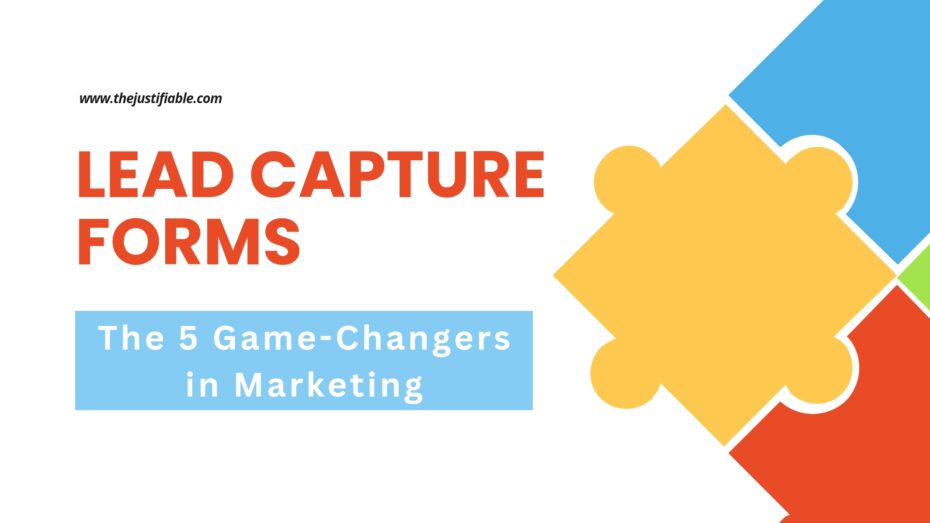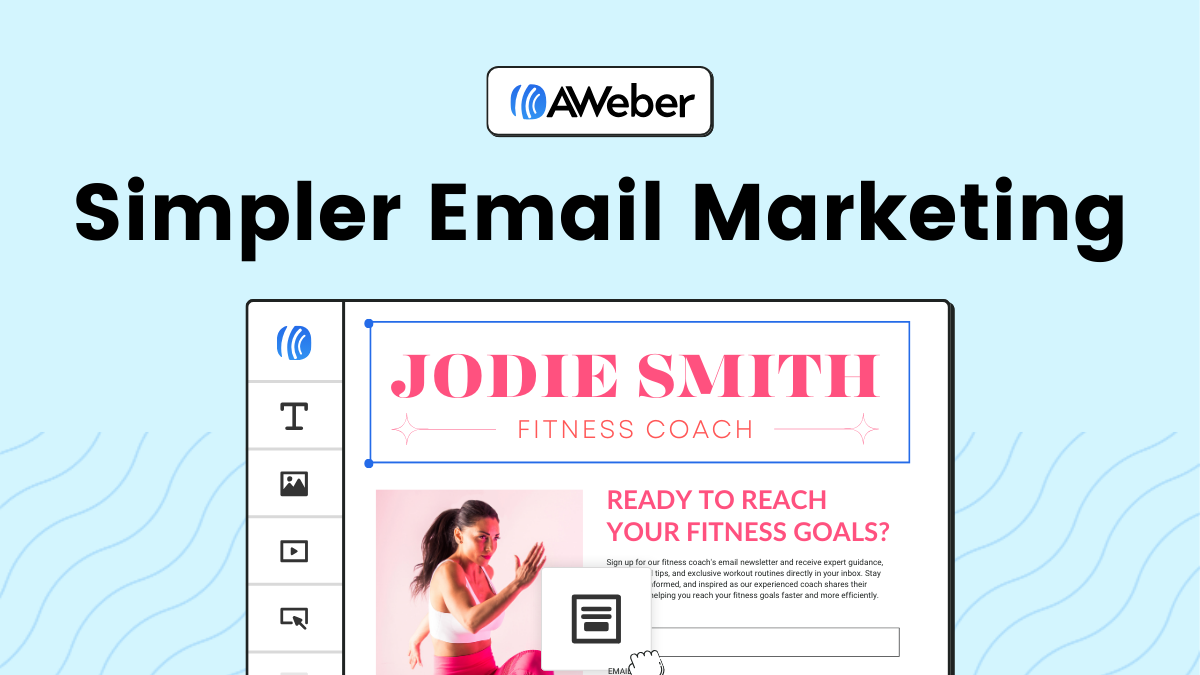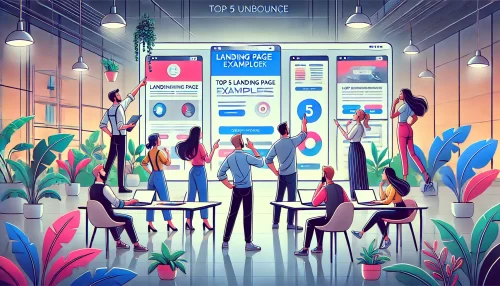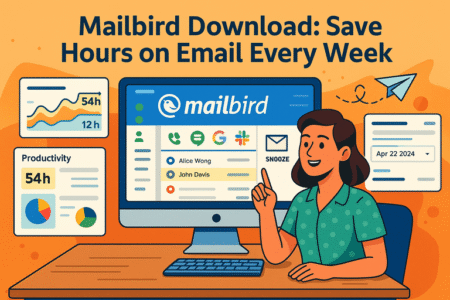Table of Contents
Lead capture forms have become a cornerstone in the digital marketing world, reshaping how businesses engage with their audience. In today’s competitive landscape, the power of a well-designed lead capture form is unparalleled in its ability to convert casual browsers into committed leads. This article dives deep into the transformative role these forms play in marketing strategies, highlighting five game-changing trends that are setting new benchmarks for success.
Imagine a world where each visitor on your website feels understood and valued from the moment they interact with your lead capture form. This is the new reality in marketing – a landscape where personalization, AI integration, and mobile optimization are not just trends, but essential components of successful digital engagement.
Join us on this insightful journey as we uncover the secrets behind effective lead capture forms. Whether you’re a seasoned marketer or new to the field, the insights provided here will equip you with the knowledge and tools to revolutionize your approach to lead generation. Get ready to transform your marketing strategy and see firsthand how these five game-changers can elevate your business to new heights.
Understanding Lead Capture Forms
In the digital marketing landscape, lead capture forms stand as pivotal tools, fundamental to the art of converting visitors into potential customers. These forms are more than just simple data collection points; they are intricately designed gateways that facilitate the first, crucial interaction between your business and its audience.
This section delves into the essence of lead capture forms and their integral role in the digital marketing ecosystem.
What Are Lead Capture Forms?
Lead capture forms are strategically placed inquiries on your website or digital platform, designed to gather essential information from visitors. They are the silent ambassadors of your brand, often being the first point of contact for potential customers. These forms can vary greatly in style and substance, ranging from basic contact information requests to detailed questionnaires.
The key to their effectiveness lies not just in what they ask, but in how they blend seamlessly into the user experience, enticing visitors to take that first step from curiosity to engagement.
The Role of Lead Capture Forms in Digital Marketing
In the realm of digital marketing, lead capture forms are not just tools; they are the catalysts for customer engagement and relationship building. They serve multiple purposes: from growing your email list to providing insights into your audience’s preferences and behaviors.
In essence, these forms are the starting point of a journey — one that guides a casual website visitor through the marketing funnel, transforming them into a lead, and eventually, a loyal customer.
Effective lead capture forms are meticulously crafted to resonate with the target audience, offering value in exchange for their information. This could be in the form of exclusive content, product demos, or newsletters.
The art of creating these forms lies in understanding the delicate balance between asking enough to gain valuable insights, while not overwhelming the visitor. This balance is critical in fostering a positive first impression and laying the groundwork for a lasting relationship with your audience.
The First Game-Changer: Interactive Design
The world of digital marketing constantly evolves, and at the forefront of this evolution is the concept of interactive design in lead capture forms. This innovative approach is reshaping how businesses interact with their audience, offering a more engaging and dynamic user experience.
Let’s explore how interactive design is revolutionizing lead capture forms and, in turn, transforming marketing strategies.
Revolutionizing Engagement with Interactive Elements
Interactive design in lead capture forms is all about creating an engaging, user-friendly experience that captures the attention and interest of visitors. These forms go beyond the traditional static fields; they include elements like sliders, quizzes, and interactive graphics.
This approach transforms the form from a mere information-gathering tool into an engaging experience, encouraging users to interact, participate, and ultimately, share their information.
But why is this interactive approach so effective? The answer lies in its ability to captivate users. In a digital world where attention spans are short, interactive forms stand out. They provide a sense of involvement and fun, breaking the monotony of filling out traditional forms.
By incorporating elements that require active participation, businesses can foster a deeper connection with their audience, making them feel more involved and valued.
Data Insights: How Interactive Forms Boost Conversion Rates
The impact of interactive design on lead capture forms is not just about user engagement; it’s also about the tangible results it delivers. Data insights reveal a significant boost in conversion rates when interactive elements are integrated into forms.
This increase is attributed to the enhanced user experience, which not only makes visitors more willing to complete the form but also leaves a lasting impression of the brand.
Studies have shown that interactive forms can increase conversion rates by up to 50%. This is a substantial uplift, demonstrating the power of interactive elements in turning visitors into leads. The key is to strike the right balance between interactivity and simplicity. Overly complex forms can deter users, while well-designed interactive forms can captivate and convert.
The Second Game-Changer: AI-Powered Forms
In the evolving landscape of digital marketing, AI-powered lead capture forms have emerged as a groundbreaking tool. They are not just changing the game; they are redefining it. This section delves into how artificial intelligence is enhancing user experiences and the real-world success stories that underscore the transformative power of AI in lead capture forms.
Enhancing User Experience with AI
The integration of AI in lead capture forms represents a significant leap forward in how businesses interact with their audience. AI-powered forms are capable of providing a personalized experience to each user, adapting in real-time based on the information entered. This personalization goes a long way in building a connection with potential customers.
Imagine a form that responds to your inputs, changes questions based on your previous answers, and guides you through the process in a conversational manner. This level of interaction, powered by AI, not only makes the form filling process more engaging but also significantly increases the likelihood of form completion.
The intelligence behind these forms allows for an intuitive user experience, predicting and addressing user needs even before they arise.
Real-World Success Stories: AI in Action
The efficacy of AI-powered lead capture forms is best illustrated through real-world success stories. Businesses across various industries have witnessed a substantial increase in lead quality and quantity after implementing AI in their forms.
For instance, a retail company experienced a 30% increase in lead generation within a month of adopting AI-powered forms. The AI system was able to analyze user data and behavior, presenting personalized product recommendations within the form itself, leading to higher engagement and conversion.
Another success story comes from the service industry, where a company implemented an AI-driven form that could dynamically adjust questions based on the user’s previous responses. This approach not only streamlined the data collection process but also made the users feel understood, resulting in a 45% increase in lead capture efficiency.
The Third Game-Changer: Integrated CRM Systems
As we delve deeper into the transformative world of lead capture forms, the integration of CRM (Customer Relationship Management)systems emerges as the third game-changer. This innovative approach is reshaping the way businesses handle lead data, offering a more streamlined and efficient process.
In this section, we explore the benefits of integrating CRM systems with lead capture forms and how this integration enhances lead quality.
Streamlining Data Management
The integration of CRM systems with lead capture forms represents a significant advancement in data management efficiency. This synergy allows for the automatic transfer of captured lead information into the CRM system, eliminating the need for manual data entry. This seamless process not only saves time but also reduces the chances of errors, ensuring that the data is accurate and up-to-date.
Imagine a scenario where every piece of information captured by your lead form is instantly sorted, categorized, and stored in your CRM system. This level of integration allows for immediate follow-up actions, ensuring that leads are engaged with the right message at the right time. It also provides businesses with a comprehensive view of their leads, enabling them to tailor their marketing strategies more effectively.
This streamlined data management process is crucial in today’s fast-paced digital environment, where the speed and accuracy of information can make a significant difference in marketing success.
Case Analysis: The Impact of CRM Integration on Lead Quality
The real value of integrating CRM systems with lead capture forms is most evident when looking at its impact on lead quality. By having a centralized system that not only stores but also analyzes lead data, businesses can gain deeper insights into their audience. This understanding allows for more targeted and personalized marketing efforts.
For instance, a tech company implemented CRM integration with their lead capture forms and witnessed a remarkable improvement in lead quality. The CRM system enabled them to identify the most engaged leads and understand their specific needs and preferences.
As a result, the company was able to tailor its follow-up communications more effectively, leading to a higher conversion rate. This case exemplifies how CRM integration can transform the way businesses approach lead management, turning raw data into actionable insights.
The Fourth Game-Changer: Personalized Form Fields
As we venture further into the innovative realm of lead capture forms, we encounter the fourth game-changing element: personalized form fields. This approach is not just about collecting data; it’s about creating a conversation with your audience.
Here, we will explore the significant impact of personalization in data collection and how customized form fields are revolutionizing the way businesses interact with potential leads.
The Power of Personalization in Data Collection
Personalization in lead capture forms is about making each interaction unique and relevant to the individual user. By leveraging data such as user behavior, location, and previously gathered information, businesses can customize form fields to resonate more deeply with each visitor. This tailored approach transforms a standard form into a dynamic, interactive experience, significantly enhancing user engagement.
Imagine a form that adapts based on what you already know about a visitor. For a returning visitor, the form could greet them by name and skip the basic questions, focusing instead on deeper, more relevant inquiries. This level of personalization not only demonstrates a business’s attentiveness to its audience’s needs but also significantly increases the likelihood of form completion and lead conversion.
Personalized forms create a sense of recognition and respect for the user’s time and preferences, fostering a stronger connection and encouraging more meaningful interactions.
Statistics Show: Customization’s Role in Conversion Improvement
The effectiveness of personalized form fields is not just theoretical; it’s backed by compelling statistics. Studies have shown that forms with personalized fields can increase conversion rates by up to 25%. This spike in conversions can be attributed to the enhanced user experience and the perceived value that personalization offers.
For example, a consumer electronics company experimented with personalized form fields based on users’ browsing history on their site. The forms displayed product recommendations and questions tailored to the users’ interests. This approach led to a noticeable increase in lead quality and a higher rate of form completion, as users felt more engaged and understood.
Personalization in lead capture forms is more than just a trend; it’s a reflection of a broader shift towards customer-centric marketing. By incorporating personalized fields into your forms, you can significantly elevate the user experience, leading to better engagement, higher-quality leads, and ultimately, more conversions.
The Fifth Game-Changer: Mobile-Optimized Forms
In today’s fast-paced digital era, the fifth game-changing element in the world of lead capture forms is their optimization for mobile devices. This advancement recognizes the ubiquitous nature of smartphones and the need for businesses to adapt to the on-the-go lifestyle of their audience.
In this section, we delve into the significance of mobile-optimized forms in capturing leads and the vast potential of mobile engagement.
Capturing Leads on the Go
Mobile-optimized lead capture forms are designed to provide a seamless experience for users on smartphones and tablets. This is crucial in a world where a significant portion of internet browsing occurs on mobile devices. Mobile optimization involves more than just making forms viewable on smaller screens; it’s about creating an intuitive, user-friendly interface that accommodates the nuances of mobile navigation.
Consider the difference in user experience when a form is properly optimized for mobile: larger form fields, responsive design that adjusts to screen size, and simplified layouts that reduce the need for zooming and excessive scrolling.
These features are not just about aesthetics; they play a critical role in reducing friction and enhancing the user’s likelihood to complete the form. In the mobile context, ease of use is paramount, and even minor inconveniences can lead to significant drop-offs in form completion rates.
Mobile Engagement: The Untapped Opportunity
The potential of mobile engagement through optimized lead capture forms is immense, yet often underutilized. Statistics indicate that mobile-optimized forms can increase submission rates by up to 40%.
This uptick is largely due to the convenience and immediacy mobile forms offer. Users are more likely to engage with a form that is accessible and easy to complete on their device, without the need to switch to a desktop.
A notable example of this is seen in the retail sector, where businesses that have implemented mobile-optimized forms for their promotions and newsletters have seen a substantial increase in subscriber numbers. This success is attributed to the accessibility of these forms, allowing customers to sign up instantly, rather than waiting until they have access to a desktop.










